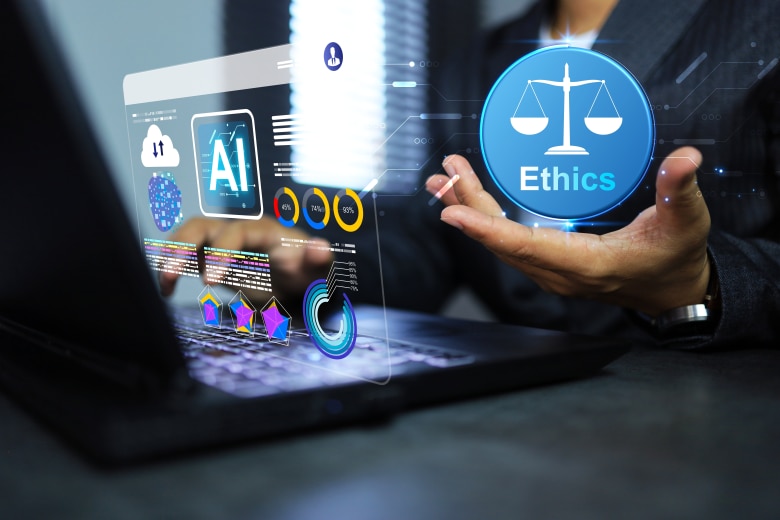Since the onset of the COVID-19 pandemic, machine learning (ML) has been thrust into the spotlight. From streamlining operations to driving R&D amidst a sometimes volatile and uncertain work environment, organizations have turned to ML to remain competitive and gain an advantage. In the healthcare industry, ML has enabled hospitals and health systems to cope with a number of unique challenges, including how to manage a 65 percent drop in elective surgeries at the onset of the crisis, and an unprecedented surge in contact tracing and syndromic surveillance efforts.
According to a recent IDC study, 50 percent of hospitals indicated that they already have an artificial intelligence (AI) framework in place to support their organization with the remaining respondents indicating they will adopt one within 24 months. Despite the rising rate of adoption of ML in the healthcare setting, experts continue to speculate whether we have reached the full potential of ML in healthcare or if it's simply overhyped. Part of the challenge is that many initially assumed that ML would serve as a magical panacea for a host of problems. After the pandemic emerged, this issue was compounded as ML made progress in some areas, but didn't quite meet expectations in others.
While many have traditionally believed ML to be a "black box", that serviced different organizational needs without much understanding of how it worked, the technology has become increasingly explainable, leading to greater credibility in directly helping patients. Ultimately, the year ahead will see ML continue to make advancements across different areas of healthcare, including two key pillars of the healthcare setting: triage and administration.
ML-Based Triage
In the year to come, we expect to see the use of ML tools in triage practices increase. Currently, health systems use simple risk scoring systems with a few variables as a way to identify patients that need immediate attention or that require higher acuity resources and pathways. ML will increasingly be used in different aspects of the patient's chart to make smarter decisions. For example, Northwell Health's ML system identifies patients who need to be woken up to take their vitals versus patients who are stable enough to just sleep through the night. Since the onset of the pandemic, smarter decision-making and personalized care have jumped to the forefront of healthcare organizations' priorities. At the beginning of the pandemic, Epic developed an ML model to scan health records, identify patient deterioration, and alert doctors automatically before patients need an ICU admission or other care intervention in order to better serve patients with life threatening problems. The use of ML tools in triage can more accurately deliver quality care to patients by helping providers work smarter.
ML-Based Administration
As much of the working world was dispersed practically overnight following the onset of COVID-19, healthcare organizations had to adapt quickly to a remote environment. This change caused a 37 percent surge in telehealth visits at its peak in May. In addition, organizations were forced to push forward other digital transformation efforts - often haphazardly, creating additional opportunities. ML algorithms can be used to help address administrative and payment challenges, such as identifying patients who will not show up for their appointments, pay their bills or adhere to their medications. For example, physicians from Binghamton University in New York used ML tools to analyze 1.6 million online medical consultations to predict patient payment behaviors and identify traits of high-value online physician-patient interactions. As an excellent pattern recognition tool, ML functions will be put to use to make healthcare administrative tasks smarter as we continue on past the pandemic with new practices in place and lessons learned.
Data: The Gas That Makes ML Go
Every ML project suffers from the same problem - not enough quality data. In the year to come, it will be essential to prioritize healthcare data interoperability and data-cleansing so that it's truly useful and usable in ML projects. The healthcare industry is already making progress towards expanding interoperability with new rules from CMS in January 2021. With the use of HL7 FHIR®-based APIs (Fast Healthcare Interoperability Resources), data sharing will be even easier for payers and developers, allowing for greater speed of innovation and more actionable insights from data sets. Furthermore, many hospitals have already put the frameworks in place to ensure that AI is being used properly. In fact, 58 percent of hospitals indicated that they have AI-specific data governance and management policies and procedures in place, according to a recent IDC study. One of the ways that ML can successfully defeat the hype train in healthcare is to make data healthy, so that ML algorithms can run without a hitch and deliver high quality results.
We have seen expectations for ML grow over the years and in 2021, we should expect to see the gap between expectations and reality shrink. From ML-based triage to administration, clean data is helping organizations meet their goals for innovation.







































